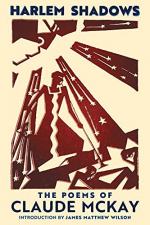
|
| Name: _________________________ | Period: ___________________ |
This test consists of 15 multiple choice questions.
Multiple Choice Questions
1. What does the word "shod" in line 12 refer to?
(a) Clothing.
(b) Footwear.
(c) Movement.
(d) Sound.
2. What color does the speaker assign to the sex workers' feet?
(a) Gray.
(b) Black.
(c) Silver.
(d) White.
3. In line 1, "footsteps of a lass" is an example of which technique?
(a) Alliteration.
(b) Synesthesia.
(c) Sibilance.
(d) Onomatopoeia.
4. Which lines of each stanza are indented?
(a) The first and third.
(b) The first and sixth.
(c) The second and fourth.
(d) The fifth and sixth.
5. What does the expression "feet of clay" in line 15 refer to?
(a) A hidden character flaw.
(b) Stubbornness and selfishness.
(c) A delicate, easily-fractured nature.
(d) Cowardice and fear.
6. In lines 2 and 3, the expression "when the night lets fall/ Its veil" is an example of which technique?
(a) Antithesis.
(b) Simile.
(c) Personification.
(d) Paradox.
7. Which techniques are evident in line 4, "To bend and barter at desire's call"?
(a) Personification and asyndeton.
(b) Asyndeton and euphony.
(c) Euphony and alliteration.
(d) Alliteration and personification.
8. Which line most clearly echoes the tension between "little girls" (line 5) and "prowling" (line 6)?
(a) Line 12, "Are trudging, thinly shod, from street to street."
(b) Line 9, "Through the lone night until the last snow-flake."
(c) Line 11, "The dusky, half-clad girls of tired feet."
(d) Line 7, "Through the long night until the silver break."
9. What is being referred to with the expression "silver break" (line 7)?
(a) Dawn.
(b) Reflections.
(c) Streetlights.
(d) Headlights.
10. What are the sex workers wearing on their feet?
(a) Light shoes meant to be worn indoors.
(b) Thick-soled shoes that make them appear taller.
(c) Boots meant to protect them from snow and rain.
(d) Elaborate shoes with high heels.
11. Whose presence is implied in "To bend and barter at desire's call" (line 4)?
(a) Police officers.
(b) Bystanders.
(c) Pimps.
(d) Clients.
12. What ideas are associated with the snow in this poem?
(a) Punishment, corruption, and justice.
(b) Heaven, purity, and nature.
(c) Circumstance, poverty, and innocence.
(d) Prejudice, indifference, and suffering.
13. In line 16, what word does the speaker use to describe the feet of his own race?
(a) Fearful.
(b) Sacred.
(c) Aching.
(d) Prideful.
14. Which two lines of each stanza create a kind of refrain in this poem?
(a) The first and sixth.
(b) The fifth and sixth.
(c) The first and third.
(d) The second and fourth.
15. In the first image of the sex workers, what is being emphasized?
(a) The burden of social expectations.
(b) The motion of their bodies.
(c) Their reaction to the cold.
(d) Their determination.
|
This section contains 363 words (approx. 2 pages at 300 words per page) |

|




